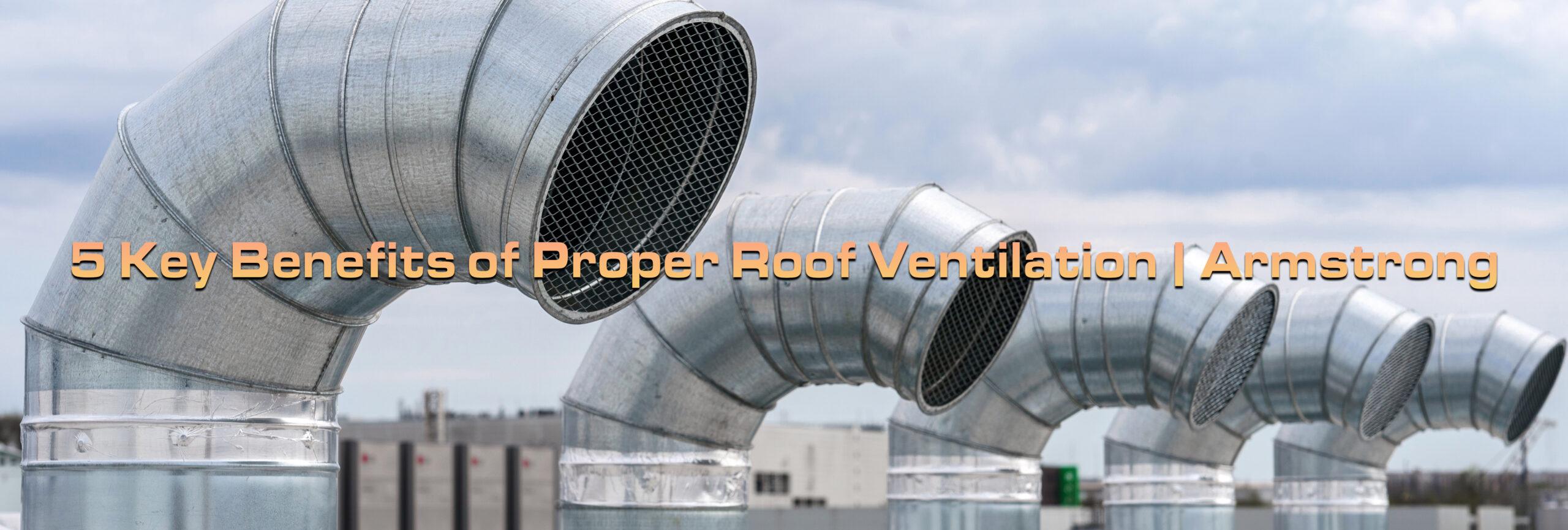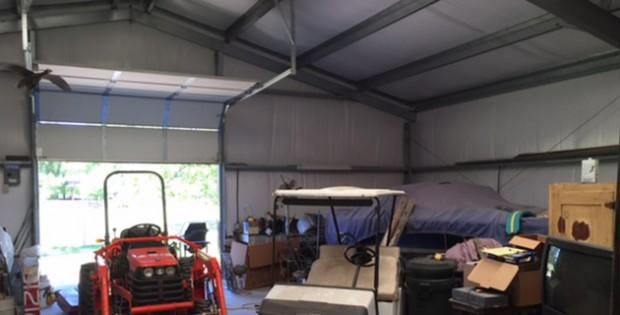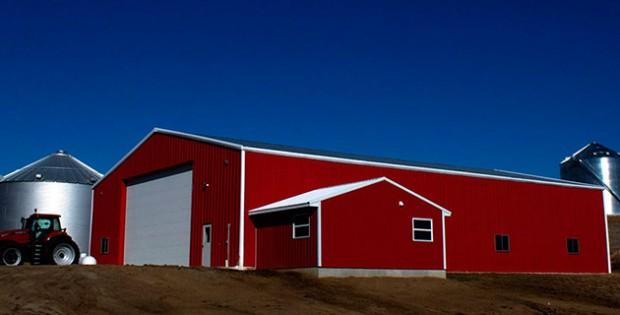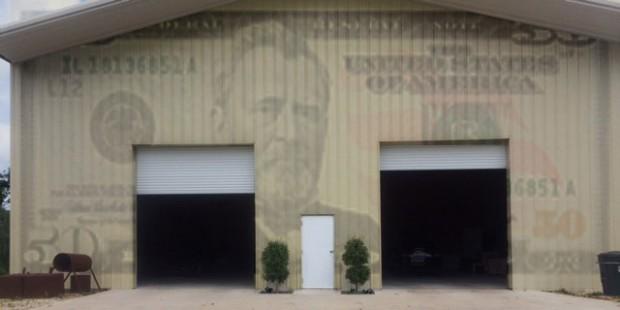5 Key Benefits of Proper Roof Ventilation

Metal buildings are known for their strength and ability to handle tough weather, which is why they are often the best choice when it comes to building a barn, industrial facility, commercial space, or hangar. But proper roof ventilation is essential to keep them performing well over time. It helps extend the building’s lifespan and also cuts down on ongoing maintenance.
Ventilation does more than just make the interior more comfortable. Without it, heat and moisture can build up inside the metal building and lead to serious issues like rust, mold, and even equipment overheating. Temperature swings inside can trigger a costly cycle of repairs and replacements.
Because steel is a conductive material, steel buildings are especially prone to condensation. That means moisture can collect inside and quietly cause damage over time. Our experienced building consultants help you avoid this. We’ll work with you to design a ventilation system that promotes airflow, prevents moisture buildup, and helps protect your investment for the long haul.
Benefits of proper roof ventilation for your metal building
- Avoid damage – Lack of proper ventilation traps heat and moisture that can compromise the building’s insulation, overheat electrical systems, and warp the metal panels. This could mean skyrocketing costs for repairs and replacements — not to mention lost productivity.
Proper roof ventilation prevents condensation from forming in the walls and roofing. It will also protect the structural integrity of your metal building down the road.
- Improve indoor air quality – The OSHA has identified poor ventilation as one of the main causes of poor indoor air quality that can lead to health problems like fatigue, headaches, and respiratory issues. These risks are more common in metal buildings used as manufacturing plants, distribution centers, or storage warehouses. Prolonged exposure to stale air and indoor pollutants can impact operational efficiency and human health.
One way to improve indoor air quality is to design a metal building with proper roof ventilation. It will help reduce airborne contaminants like fumes, volatile organic compounds, and dust common in industrial settings. In turn, this will improve worker health and comfort, reducing sick days and enhancing productivity.
- Save energy – The NREL (National Renewable Energy Laboratory) strongly emphasizes the impact of ventilation on cooling and heating loads. In turn, this affects the overall operating costs and energy consumption in metal buildings.
Proper roof ventilation is key to enhancing HVAC performance. Your heating and cooling systems won’t have to work too hard to maintain optimum indoor temperatures, and this translates to better energy efficiency and lower utility costs.
- Temperature regulation – Does your building house sensitive equipment and electronic devices? Do you use it for storage? Then, you need to keep the temperature regulated to prevent damage. Proper roof ventilation helps regulate temperature in metal buildings, preventing heat buildup and maintaining optimal conditions in spaces like equipment storage and server rooms.
- Protect your assets – Proper roof ventilation ensures good airflow and cools your metal building’s indoor environment to protect your electronics, machinery, and other sensitive assets from heat and humidity damage. Failing to design and maintain this ventilation can hurt your bottom line. Invest in good airflow to safeguard your business’s long-term profitability.
Roof ventilation options for your metal building
Now that you understand why roof ventilation matters, let’s look at how to improve airflow in metal buildings. There’s no universal solution — the best approach depends on the building’s size, layout, and purpose. That’s why our building consultants take the time to evaluate your design and specific needs. Whether you’re dealing with excess moisture, heat buildup, or poor air quality, we’ll help you choose a ventilation system that fits your metal building and addresses those challenges effectively.
- Ridge vents – Placing ridge vents along the peak of sloped roofing will allow hot, rising air to leave large metal buildings naturally. This is particularly helpful for high-ceiling structures used as manufacturing facilities and warehouses. The vents enable natural airflow to boost comfort and prevent too much heat buildup. In turn, this mitigates overheating and minimizes the strain on HVAC systems. This makes ridge vents especially helpful in structures with high heat loads or heavy machinery. So, they help keep your building’s utility costs in check.
- Turbine vents – For energy-efficient roof ventilation, look no further than turbine vents. These wind-powered solutions rely on a natural resource to create suction and draw warm, stale out of metal buildings. And since they don’t rely on electricity, they help reduce operating costs.
- Turbine vents are ideal for medium-sized steel structures and those with varied airflow requirements. They help mitigate moisture buildup and heat accumulation, especially in industrial settings with machinery that causes too much humidity and heat.
- Soffit vents – Soffit vents are placed along the eaves of the roofing to let fresh air in. At the same time, the ridge vents allow hot air to escape. This mechanism promotes continuous airflow to regulate the interior temperature of metal buildings. Plus, it keeps moisture buildup at bay. This makes them particularly useful for larger steel structures storing equipment or heat-sensitive materials.
Leave your metal building’s design to our experts
Here at Armstrong Steel, we have experienced building consultants who will walk you through the design process. Whether you need a basic or intricately designed metal building, we will ensure its timely design, fabrication, and delivery. Get a quote now when you click ‘Price My Building’ or call 1-800-345-4610 to discuss your project with our team.
Popular Posts

Will Adding a Steel Building Increase My Property Value?
I’ve seen steel buildings increase in popularity every day because builders use these durable, versatile and flexible construction solutions in every application. Not only have homeowners utilized a steel building for residential purposes, but builders have also made additions to their existing property. No doubt that a steel building garage will increase the value of a home,… …

Steel Building Quotes: Get a Grasp on Prices and Estimates
What is the first step of a steel building project, or any construction project for that matter? After you decide to add a new garage, agricultural or commercial building to your property, you’ll most likely start contacting steel building manufacturers for steel building quotes. From there, you can create a timeline for yourself and develop… …

4 Important Factors That Will Impact Your Steel Building Cost
For the past decade, the steel industry has undergone many transformations, and in effect it’s changed the way the construction industry views steel buildings. While the steel itself has been around for hundreds of years, designers and owners of metal buildings are seeing many increased benefits. Because of streamlined processes at manufacturers, energy saving paints… …